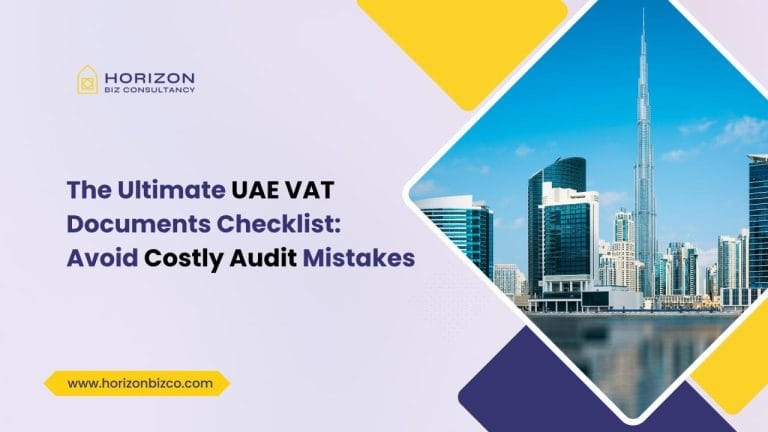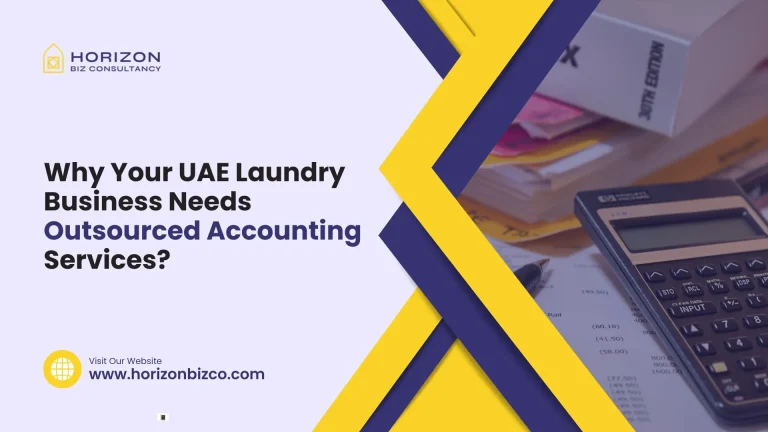This thorough manual has been created to give you the exact information and practical tactics you need to handle the complexity of VAT paperwork in the United Arab Emirates. We go into great detail about the precise paperwork required for VAT registration, offer industry-specific checklists for Free Zone, Mainland, and Offshore businesses, and reveal astute organizational strategies that turn simple compliance into a major competitive edge.
In order to ensure a smooth audit process and protect your financial integrity, we want to enable your company to not only meet but also surpass the Federal Tax Authority’s (FTA) requirements.
Why You Shouldn’t Be Shuffling Your Feet on the Need For Proper VAT Documentation
Careful VAT documentation is not just a legal requirement in the UAE’s ever-changing economy, it is also a vital component of sound financial management and effective operations. One missing invoice or a little carelessness in maintaining records can lead to a disaster which is very expensive as well.
One unaccounted-for invoice may cause:
- FTA penalties up to AED 50,000 – a serious financial burden(refers to repeated record-keeping offenses, other violations (e.g., missing tax invoice) have different fines).
- Extended audits (3+ months) – disrupting business operations.
- Refund delays – blocking cash flow and affecting liquidity.
The foundation of tax compliance is sound VAT documentation, which creates a methodical approach to record management and guarantees regulatory compliance. This framework includes maintaining thorough transaction logs that enable smooth audit procedures, standardizing invoice formats, and putting sequential numbering systems into place.
1. Mandatory VAT Registration Documents: Your First Step to Compliance
Core Documents for All Businesses
- Valid trade license (scanned copy)
- Passport + Emirates ID of the authorized signatory (not expired)
- Bank letter confirming account details
- Proof of authorization (Board Resolution or POA)
Additional Documents Based on Business Type
- Free Zone Entities: Free zone license, customs records for imports/exports
- Mainland Companies: Tenancy contract, Articles of Association
- Offshore Entities: International banking proofs, ownership documents
Establishing your company’s VAT identity within the UAE tax system is based on the registration paperwork, which calls for exacting attention to detail and up-to-date information. Before approval is given, the FTA systematically verifies each document to ensure compliance readiness, operational capability, and business legitimacy.
2. Financial Records: The Audit Backbone – Ensuring Fiscal Transparency
For Taxable Supplies
- Audited/non-audited financial statements
- Self-prepared calculation sheets (taxable vs. zero-rated supplies)
- Revenue forecasts with contracts and LPOs
- Monthly turnover declarations (signed & stamped)
For Taxable Expenses
- Expense budget reports
- Invoices, LPOs, or title deeds (with supplier TRNs and VAT mentioned)
Thorough financial records produce a methodical audit trail that illustrates the full range of business activities, from the creation of initial revenue to the distribution of expenses and the computation of taxes. The documentation framework necessitates a distinct division of taxable and exempt supplies, backed by thorough calculation techniques that allow auditors to independently confirm VAT calculations.
3. Invoice Management: FTA’s Top Red Flags – Precision in Every Transaction
Outbound Invoices Must Include:
- TRN (Tax Registration Number)
- Sequential invoice numbers
- Clear descriptions (e.g., “Catering services for 50 pax, 5% VAT”)
Inbound Invoices Must Be:
- Verified via the FTA portal (supplier TRN)
- Separated from personal/entertainment expenses with clear business notes
When handled efficiently, invoice management brings with it a uniform way of dealing with transactions and keeping the right documentation as a matter of course, a way to stay FTA compliant without slowing down day to day business. The cause-and-effect numbering ensures that there are no missing or duplicated CTC’s while the comprehensive descriptions unambiguously show the business purpose and VAT implications.
4. Industry Specific Requirements, Customizing Compliance to Your Industry
Trading/Import-Export
- Customs declarations (to support zero-rating)
- Bill of lading with HS codes
Service Providers
- Time logs and deliverable reports (to verify place of supply)
Construction
- Subcontractor agreements with VAT clauses
Relevant documentation stipulations, under VAT in the UAE, are tailored to individual industry sectors while taking into account the specific operating environment and legislation that is relevant for each industry. Each sector requires special documentation to address particular compliance issues, including confirming entitlement to zero-rating for exports, and determining where a supply of service takes place in different jurisdictions.
5. Digital Compliance Hacks: Leveraging Technology for Seamless VAT Management
- Cloud Storage: Use folders like FTA_Audit_2025
- Metadata Tags: Tag files like VAT_Input, ZeroRated_Export
- 5-Year Rule: Automate retention using tools like Zoho Docs
Tool Suggestion: Use the FTA e-Service Portal to pre-validate submissions and catch issues early.
Audit Survival Checklist: Your Blueprint for a Smooth Audit
Pre-audit
- Index all documents by tax period
- Prepare summary schedules that match VAT returns
During audit
- Assign one point of contact for all auditor communications
- Use FTA’s Excel template for turnover declarations
Post-audit
- Fix all gaps within 14 days to avoid penalties
Technology-based compliance methods increase the precision and availability of value added tax records. By utilizing the many aspects of technology, including digitally driven forms, ERP systems, and that will successfully streamline and improve the more traditional forms of documents. An organized technology-based system promotes workflows that approach standardization, reduces human error around transactions, and creates a systematic ethos for record keeping.
Turn Compliance Into Advantage: Beyond Mere Adherence
Businesses with organized VAT records:
- Get faster refunds (20 business days)
- Win government tenders (proves credibility and compliance)
To identify gaps, don’t wait for an audit. Act now. To guarantee seamless audits and financial stability in 2025 and beyond, begin organizing with a structured UAE VAT Document Checklist.
Up-to-date VAT documents are not just a necessity, but also an opportunity to do profitable business and operate more efficiently and competitively in key markets. Good & consistent records for the VAT permits better decision making in financial issues and demonstrate to customers, investors, and authorities an excellence of organization.
Conclusion
Quality in VAT documentation showcases a distinction in strategic positioning towards operational excellence and financial integrity that transcends regulatory compliance in UAE’s dynamic business landscape. The comprehensive process outlined throughout this guide illustrates how a rigorous documentation framework from accurate record keeping to enhancing credibility in omni-competitive markets, produces a waterfall of organizational benefits. Businesses that embrace VAT record keeping systematically represent a modern company open to regulatory review and conducive to long-term aspirations rather than simply a compliant business entity.
FAQ’s
To file a VAT return, businesses need valid tax invoices, credit/debit notes, customs declarations, and a summary of VAT calculations. These documents must match bank records and support every entry submitted to the FTA.
Businesses must register for VAT if taxable supplies exceed AED 375,000 annually. Compliance also requires accurate invoicing, proper record-keeping, and timely return submissions aligned with FTA regulations.
For VAT registration, the FTA requires a trade license, Emirates ID, passport copy, proof of address, bank details, and financial documents showing taxable activity above the threshold.
A proper VAT invoice must include the supplier and buyer’s TRNs, invoice date, description of goods or services, and the VAT amount. It should be clearly labeled as a “Tax Invoice.”
Box 7 is used for adjustments related to imported goods, not for general input VAT recovery. It includes VAT paid on business expenses, which must be supported by proper invoices and used only for eligible costs.





